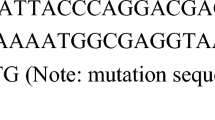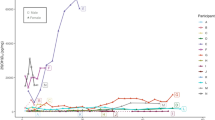Abstract
IN “The Descent of Man,” p. 19, under the heading of Rudiments, Darwin refers to the long isolated hairs seen in the eyebrows of certain individuals, as representing similar hairs in the superciliary region of the chimpanzee, baboon and certain species of macacus. An analogous phenomenon, with a different significance, found sometimes in the pectoral region in man, seems to be worth notice. I have recently examined two persons, a male aged twenty-eight and a female aged thirty-three years, both with particularly hairless, smooth skins, and each showing, at a critical point in the pectoral region, certain outstanding hairs set closely together, the former three long hairs an inch in length, and the latter two hairs an inch and a half in length. The point of interest lies in the position and direction of these few scattered hairs, which are as noteworthy, in their way, as “erratic blocks” on a level plain. In the female case the two hairs were set just over the middle of the left second costal cartilage, and they pointed persistently upwards towards the neck. In the male case the three long hairs were set close to the sternum in the left second intercostal space pointing persistently downwards. The situations of these two curious islets of hair are exactly above, on the one hand, and below, on the other, the level at which the upward chest-stream and the downward chest-stream always divide in a hairy subject. The remarkable persistence in their ancestral direction of these few “fossil” hairs, as they might be called, seems to confirm the view that if man has inherited his hairy covering from a simian ancestry it has been modified in many regions by use and habit since he inherited it. We say that a little straw shows the way in which the wind blows, and I submit that sundry stray hairs on the body of man similarly testify as to the trend of certain mechanical forces which have acted and still act upon him.
This is a preview of subscription content, access via your institution
Access options
Subscribe to this journal
Receive 51 print issues and online access
$199.00 per year
only $3.90 per issue
Buy this article
- Purchase on SpringerLink
- Instant access to full article PDF
Prices may be subject to local taxes which are calculated during checkout
Similar content being viewed by others
Rights and permissions
About this article
Cite this article
KIDD, W. Persistence of the Direction of Hair in Man. Nature 65, 344 (1902). https://doi.org/10.1038/065344c0
Issue date:
DOI: https://doi.org/10.1038/065344c0



